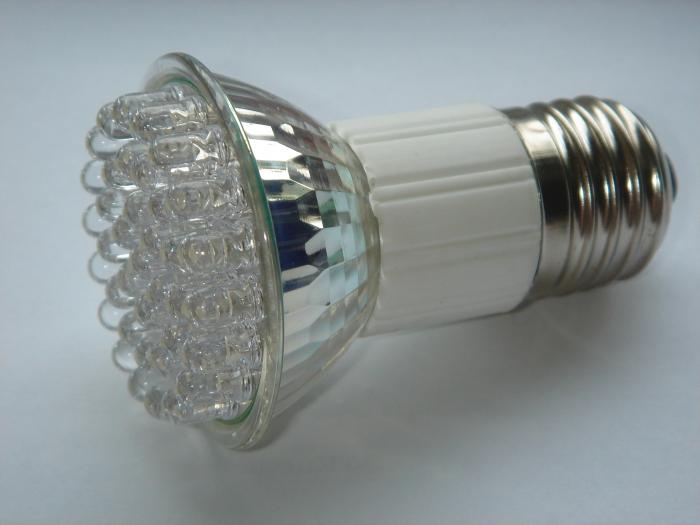The calculation of resistors for LEDs is a very important operation that must be carried out before you connect the LED to the power source. The performance of both the diode itself and the entire circuit will depend on this. The resistor must be connected in series with the LED in series. This element is intended to limit the flowing current through the diode. If the resistor has a nominal resistance lower than required, then the LED will fail (burn out), and if the value of this indicator is higher than necessary, then the light from the semiconductor element will be too dim.
The calculation of resistors for LEDs should be performed according to the following formula R = (US - UL) / I, where:
- US is the voltage of the power source;
- UL - diode supply voltage (usually 2 and 4 volts);
- I is the current of the diode.
Be sure to make sure that the selected value of the electric current is less than the maximum current value of the semiconductor element. Before proceeding with the calculation, it is necessary to convert this value into amperes. Usually it is indicated in milliamps in the passport data. Thus, as a result of calculations, the value of the nominal resistance of the resistor in Ohms will be obtained. If the obtained value does not coincide with the standard resistor, then select the largest nearest value. Or you can connect in series several elements with a smaller nominal resistance in such a way that the total resistance corresponds to the calculated one.
For example, this is how resistors for LEDs are calculated. Suppose we have a power supply with an output voltage of 12 volts and one LED (UL = 4 V). The required current is 20 mA. We translate it into amperes and get 0.02 A. Now we can proceed to the calculation of R = (12 - 4) / 0.02 = 400 Ohms.
Now we will consider how it is necessary to carry out the calculation in series connection of several semiconductor elements. This is especially true when working with LED strips. Serial connection reduces power consumption and allows you to simultaneously connect a large number of elements. However, it should be noted that all LEDs connected in series must be of the same type, and the power supply must be sufficiently powerful. So in this way, you should calculate the resistors for LEDs in series connection. Suppose we have 3 elements in the circuit (each voltage is 4 volts) and a 15-volt power supply. We determine the voltage UL. For this, it is necessary to add up the indicators of each of the diodes 4 + 4 + 4 = 12 volts. The passport value of the LED current is 0.02 A, we calculate R = (15-12) / 0.02 = 150 Ohms.

It is very important to remember that parallel connection of LEDs, to put it mildly, is a bad idea. The thing is that these elements have a range of parameters, each of them requires a different voltage. This leads to the fact that the calculation of the LED is a futile exercise. With this connection, each element will shine with its own brightness. Only a limiting resistor for each diode separately can save the situation.
In conclusion, we add that by this principle all LED assemblies are calculated, including LED lamps. If you want to assemble such a design yourself, then these calculations will be relevant for you.